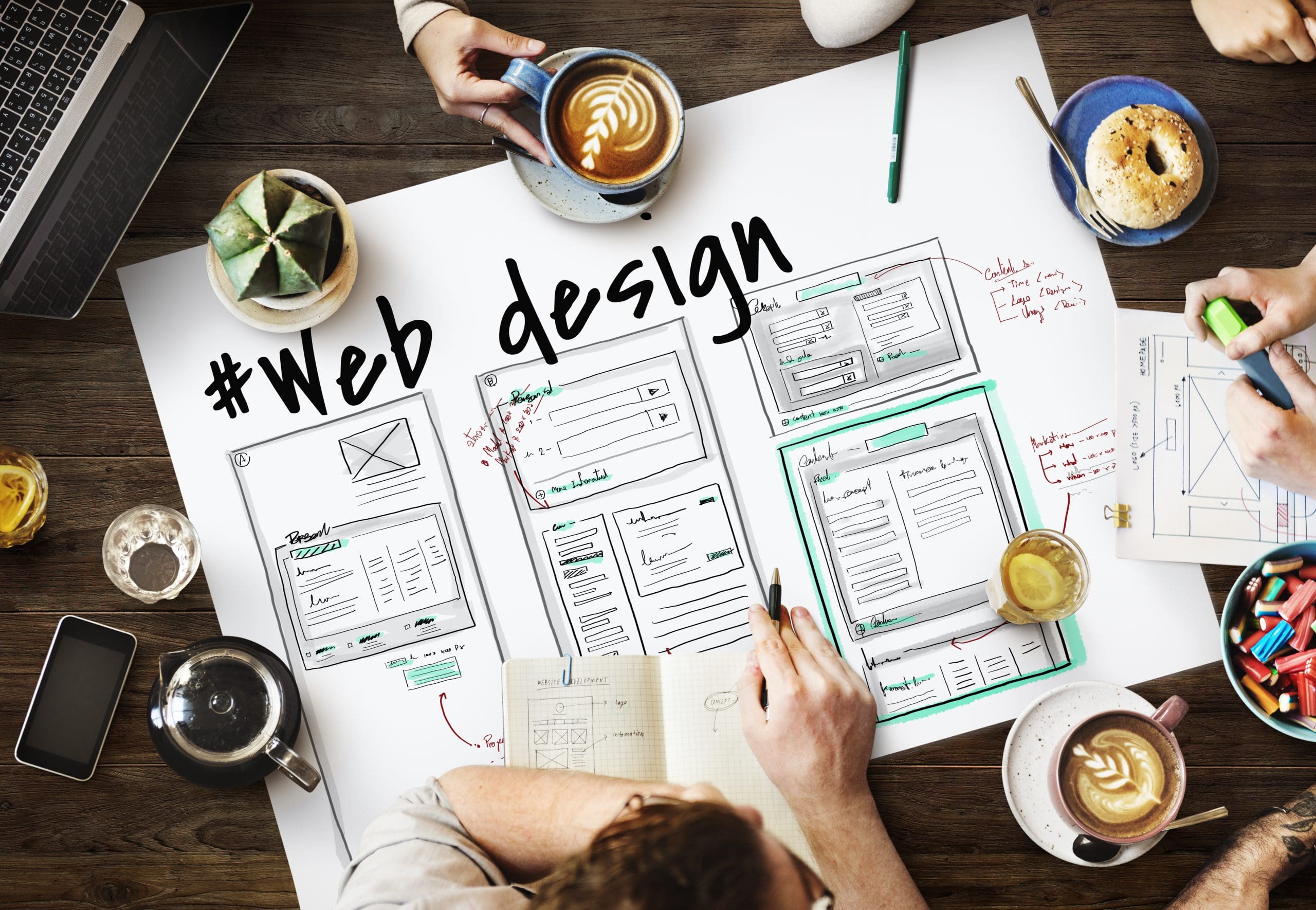Website Design London Ontario for Professional Online Identity
Website Design London Ontario for Professional Online Identity
Blog Article
How to Properly Integrate Visual Appeals and Capability in Website Design
When creating an internet site, you need to strike a balance in between looks and capability. It's not almost looking good; your style needs to also serve a purpose and guide customers properly. By concentrating on simpleness and intuitive navigation, you can develop an interesting experience. What components absolutely boost use while keeping aesthetic allure? Let's check out the crucial principles that can cause an unified mix of elegance and feature.
Understanding the Significance of Aesthetic Appeals and Performance
When you create an internet site, recognizing the equilibrium in between appearances and capability is crucial for producing an effective individual experience. A visually appealing site grabs focus, yet it's the performance that keeps users involved. Visitors will swiftly shed interest and leave.Consider your target audience and what attracts them in if your site looks great yet is tough to navigate. You intend to create a layout that shows your brand while making certain simplicity of use. Streamlined designs, intuitive navigating, and clear contact us to action can boost both aesthetics and performance.

Principles of Efficient Internet Layout
To create an effective website design, you need to abide by a number of vital principles that improve both individual experience and visual charm. Focus on simplicity; a tidy format aids customers browse conveniently. Use a constant color scheme and typography to maintain coherence across your site. This fosters familiarity and trust.Next, assure your style is receptive. Individuals gain access to web sites on different tools, so your layout needs to adjust flawlessly. Pay focus to visual hierarchy; emphasize crucial aspects with color, size, or positioning to direct customers' focus.Finally, include ample white space. It avoids mess and makes material much more digestible. Remember, reliable website design equilibriums aesthetic appeals and performance, so every design selection ought to offer an objective. By complying with these concepts, you'll produce a website that's not just aesthetically appealing yet also straightforward, ultimately maintaining visitors involved and encouraging them to return.
Focusing On User Experience
When prioritizing individual experience, you'll wish to start by understanding what your users truly require. Streamlining navigation design can make a massive difference in exactly how quickly they locate what they're looking for. Additionally, enhancing visual power structure helps guide their interest to one of the most important aspects on your website.
Understanding User Demands
Understanding user requirements is crucial for developing an appealing web experience that maintains site visitors returning. To accomplish this, you should determine the goals and choices of your target market. Start by conducting customer research study, like meetings or surveys, to collect understandings on what individuals value most. When interacting with comparable sites, pay attention to their discomfort factors and difficulties. This information enables you to tailor your layout, guaranteeing capability lines up with user assumptions. Additionally, think about creating individual characters that represent various sectors of your audience, helping you picture their needs during the layout process. When you focus on comprehending customer needs, you produce a website that not only looks fantastic yet also provides a smooth, delightful experience that fosters commitment.
Simplifying Navigation Layout

Enhancing Aesthetic Hierarchy
A solid aesthetic pecking order is essential in assisting individuals with your internet site and ensuring they involve with key material. To accomplish this, make use of spacing, shade, and size purposefully. Make important aspects like headings bigger and bolder than body text, attracting attention quickly. Utilize contrasting colors to highlight telephone calls to action, urging clicks. Additionally, utilize adequate white room to separate areas, making content digestible and inviting.Consider the circulation of details; arrange aspects rationally, leading users' eyes from one factor to the following. Use aesthetic signs, like arrowheads or lines, to direct attention. By focusing on aesthetic pecking order, you boost customer experience and increase the likelihood of conversions, ensuring your site is both visually pleasing and functionally efficient.
Color Concept and Its Influence on Usability
While choosing the right colors for your website may seem like a small information, it substantially affects usability and user experience. Shade influences just how customers regard details and can boost or prevent navigation. Contrasting colors can aid vital components stand out, making it much easier for visitors to find what they need.Additionally, take into consideration the psychology of colors: blue usually motivates depend on, while red creates necessity. Understanding your target audience can direct your color selections, guaranteeing they reverberate well.Moreover, constant shade systems assist construct brand identification, making your web site extra unforgettable. However, beware-- way too many shades can overwhelm customers. Adhere to a restricted scheme that complements your content and keeps clarity.Incorporating ease of access is additionally vital; validate your color combinations get along for those with aesthetic disabilities. By thoughtfully applying color concept, you'll enhance functionality and develop an extra interesting individual experience.
Typography: Harmonizing Design and Readability
Color choices set the stage for your internet site, but typography plays a similarly crucial role in enhancing individual experience. You desire your message to connect plainly while likewise mirroring your brand's personality. Begin by selecting font styles that are not only appealing however likewise understandable. Sans-serif typefaces commonly function well for electronic displays, as they're easier to read at various sizes.Maintain a power structure by utilizing different font sizes and weights; this overviews customers with your web content easily. Think about line spacing and letter spacing; as well tight can discourage readers, while also loosened can interfere with the circulation. Limitation your typeface selections to 2 or 3 to keep the design cohesive.Finally, constantly check your typography across different devices and browsers. What looks good on one screen might not on another. Stabilizing design with readability assurances that your message resonates, keeping your target market involved and notified.
Responsive Design: Making Looks Deal With All Devices
To assure your site looks great on any kind of gadget, you'll require to embrace receptive design go to this web-site principles. This strategy warranties wikipedia reference your website adapts to various display dimensions, providing a perfect customer experience. Begin by utilizing liquid grids and versatile photos that scale effortlessly. As opposed to dealt with dimensions, select portions and relative systems, allowing your design to readjust dynamically.Next, carry out media questions in your CSS. These let you use various styles based upon device features, like screen width. By doing this, you can preserve visual allure while ensuring functionality.Don' t neglect about touch targets; ensure switches and links are simple to touch on smaller screens. Focus on vital web content, so users can quickly browse your site despite their tool. By focusing on these aspects, you'll produce an interesting, aesthetically appealing experience that meets the requirements of all customers, whether they get on a desktop computer, mobile phone, or tablet computer .
Carrying Out Functionality Screening for Continuous Enhancement
To improve your website design, you need to set clear use objectives that line up with user requirements. By carrying out individual examinations, you can gather important comments on exactly how real people interact with your website. Assessing these outcomes will certainly help you make informed improvements and develop a more reliable customer experience.
Specifying Use Goals
While aesthetic appeals can draw users in, specifying use objectives is necessary for ensuring their experience remains gratifying and seamless. Start by recognizing what you want customers to attain on your site (website design london Ontario). Consider their jobs, behaviors, and requirements. Are they searching for info, making a purchase, or enrolling in an e-newsletter? Establish clear benchmarks to determine success, like task conclusion rates or time on task. Focus on user-friendly navigating, available web content, and responsive layout to enhance use. Consistently review these objectives as user expectations advance. By defining use goals, you produce a structure for evaluating and enhancing your website's performance. This emphasis on use not only increases individual satisfaction however likewise reinforces the general efficiency of your layout
Conducting Individual Tests
Performing customer tests is vital for improving your website and ensuring it meets your audience's requirements. Begin by recognizing your target customers and developing a test plan that outlines your objectives. Utilize a mix of measurable and qualitative techniques, such as studies, interviews, and task-based monitorings, to gather complete responses. Welcome individuals to browse your website while you observe their interactions and keep in mind any type of problems they come across. Motivate open discussion to catch their thoughts and feelings about the design and functionality. Keep sessions brief and focused, ensuring you cover key locations without frustrating customers. Make certain to record all searchings for, as this info will be invaluable for making enlightened design decisions that boost both appearances and use.
Examining Test Results
Just how can you efficiently analyze the outcomes of your functionality tests to drive continuous enhancement? Begin by classifying feedback into common styles. Try to more tips here find patterns in individual behavior that highlight discomfort points or locations for enhancement. Usage quantitative information, like job completion prices and time on task, to gauge functionality fairly. Do not fail to remember to take right into account qualitative insights from customer comments; they often disclose underlying problems that numbers can not show. Focus on the most impactful findings and create workable items for your style group. Remember, it's regarding iterating-- carry out changes, after that test once again. This cycle of testing, assessing, and refining helps you equilibrium visual appeals and capability, ensuring your web site meets individual demands efficiently while preserving aesthetic charm.
Frequently Asked Questions
Exactly how Do I Pick the Right Shade Palette for My Internet site?
To choose the best shade combination for your internet site, consider your brand name's character, target market, and psychological influence (website design london Ontario). Usage shade psychology, create harmony, and warranty readability. Examination mixes to see what reverberates ideal with site visitors
What Tools Can Aid With Website Design Appearances and Capability?
You can make use of tools like Adobe XD, Figma, and Map out to improve your web style's aesthetic appeals and performance. These platforms offer intuitive user interfaces, partnership attributes, and pre-made templates to streamline your creative process and boost your layouts.
Exactly How Can I Include Animations Without Jeopardizing Performance?
To integrate animations without endangering performance, prioritize subtle results that boost individual experience. Use CSS computer animations for smoother communications, assurance quick lots times, and examination on various tools to preserve performance while including aesthetic appeal.
What Are Common Mistakes to Prevent in Web Layout Appearances?
When creating, prevent chaotic designs, poor shade choices, and irregular font styles. Do not neglect mobile responsiveness, as it can alienate customers. Confirm your layout lines up with your brand name, creating a smooth experience that engages site visitors properly.
How Usually Should I Update My Site's Layout for Optimal Aesthetics?
You must update your site's design every 1-2 years to stay on top of patterns and keep suitable visual appeals. Frequently renewing visuals helps involve visitors and assurances your website remains user-friendly and appealing. When you develop an internet site, recognizing the balance between aesthetics and performance is necessary for producing a reliable user experience. To produce an efficient internet layout, you require to adhere to numerous vital principles that enhance both user experience and visual allure. Users access web sites on different gadgets, so your layout should adapt perfectly. When prioritizing individual experience, you'll want to start by recognizing what your customers absolutely require. Beginning by performing customer study, like interviews or surveys, to gather insights on what customers value most.
Report this page